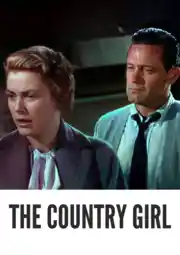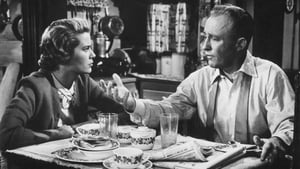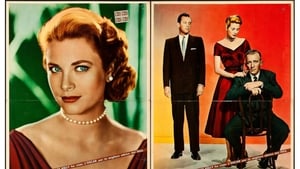Contact: [email protected]
Video Sources 0 Views
- Watch trailer
- The Country Girl Colorized


The Country Girl Colorized 1954: Transforming Best Old Movies for Modern Viewers
Synopsis
[ez-toc]




Introduction
In the kaleidoscope of cinematic history, certain films stand as pillars of storytelling, offering a window into the past that transcends the limitations of time. One such gem, “The Country Girl Colorized 1954,” emerges from the monochrome archives, reborn in vibrant hues. In this article, we embark on a journey to explore the significance of colorizing old films, delving into the essence of “The Country Girl Colorized” and unraveling its enduring appeal for contemporary audiences.
Read Media File Transfer Agreement: Terms and Conditions
Read FAQ
Brief Overview of The Country Girl Colorized Film
“The Country Girl Colorized,” originally released in 1954, takes us behind the glittering façade of Hollywood, delving into the complexities of fame, love, and redemption. Now, with the magic of colorization, this cinematic classic returns to captivate modern viewers, bridging the gap between the golden age of cinema and today’s digital era.
Significance of Colorizing Old Movies and Its Impact on Modern Viewership
Colorization, once a contentious issue among purists, has evolved into a tool for breathing new life into old films. The act of infusing color into black-and-white masterpieces offers a fresh perspective, making these cinematic treasures more accessible to contemporary audiences. “The Country Girl Colorized 1954” serves as a testament to the transformative power of colorization, inviting viewers to rediscover the magic of vintage storytelling.
Key Attraction of Old Films to Contemporary Audiences
What draws modern audiences to the charm of old movies? Is it the simplicity of storytelling, the elegance of bygone eras, or the timeless performances of legendary actors? “The Country Girl” embodies these elements, and its colorized version serves as a gateway for new generations to appreciate the nuances of classic cinema. As we delve into the film, we uncover the layers that make “The Country Girl” a timeless tale.
The Country Girl: Revitalizing a Classic through Colorization
Overview of The Country Girl Colorized (1954)
Set against the backdrop of Hollywood, “The Country Girl Colorized” unfolds as a backstage melodrama, weaving a morality tale that explores the perils of fame and the consequences of addiction. Directed by George Seaton, the film navigates the intricacies of the entertainment industry while delving into the complex relationships that define the characters.
Understanding The Country Girl Colorized: Plot and Themes
The narrative centers around Frank Elgin, a fallen star portrayed by Bing Crosby, who battles alcoholism. When he is cast in a Broadway play, his wife Georgie, played by Grace Kelly, becomes entangled in a triangular affair with the play’s director, portrayed by William Holden. The film serves as a morality tale, addressing the devastating effects of alcoholism on personal and professional lives.
The Country Girl Colorized: Casting Choices and Standout Performances
The success of “The Country Girl Colorized” rests on the shoulders of its stellar cast. Bing Crosby, known for his musical prowess, takes on a challenging role as the tormented Frank Elgin. Grace Kelly, transitioning from glamorous roles, delivers a transformative performance as Georgie Elgin, capturing the complexities of her character. William Holden, with his magnetic presence, completes the trio, forming the heart of a captivating love triangle.
The Musical Moments in Colorized The Country Girl
Bing Crosby’s musical interludes in “The Country Girl” take on new life in the colorized version. The addition of color enhances the emotional resonance of these sequences, offering viewers a deeper connection to the character’s struggles and triumphs. The film uses music not only as a source of entertainment but also as a vehicle to explore the characters’ emotions and the taboo subject of addiction.
The Country Girl Colorized: A Controversial yet Impactful Adaptation
As with any colorized classic, “The Country Girl Colorized 1954” sparked both excitement and skepticism upon its release. Film critiques scrutinized the adaptation, weighing the benefits of colorization against the potential pitfalls. In this section, we navigate the critical reception of the colorized version, analyzing the strengths and weaknesses of revitalizing “The Country Girl” for modern audiences.
Preserving Cinematic Artistry: The Role of Colorization in Honoring Film Heritage
Understanding the Process of Colorizing Black and White Films
Colorization, often misunderstood, is a meticulous process that involves adding color to black-and-white films. The goal is not to replace the original but to offer a fresh perspective that respects the filmmaker’s vision. The restoration process requires a delicate balance to preserve the cinematographic integrity while enhancing the visual experience for modern viewers.
Debunking Myths About Colorization Compromising the Integrity of Original Works
Critics argue that colorization compromises the artistic integrity of black-and-white classics. However, proponents contend that when done with respect and precision, colorization can elevate the viewing experience without overshadowing the original intent. “The Country Girl Colorized 1954” serves as a case study in debunking myths surrounding the impact of colorization on film heritage.
The Role of Color Restoration in Enhancing the Viewing Experience for Modern Audiences
Color restoration breathes new life into old movies, allowing contemporary audiences to engage with the material in a way that feels relevant. In the case of “The Country Girl,” the colorized version invites viewers to step into the world of 1950s Hollywood with a heightened sense of immersion, bringing the characters and their struggles to the forefront.
Bringing The Country Girl into the Spotlight: Its Impact on 1950s Cinema and Beyond
Exploration of Bing Crosby’s Other Notable Films in 1954
To understand the impact of “The Country Girl,” we must explore Bing Crosby’s other cinematic contributions in 1954. From musicals to dramas, Crosby’s versatility during this period contributed to the cultural tapestry of the era. By juxtaposing “The Country Girl” with Crosby’s other works, we gain insights into the actor’s creative range and the film’s place in 1950s cinema.
The Year of Grace Kelly: Examining Her Remarkable Performances
“The Country Girl” aligns with a pivotal moment in Grace Kelly’s career, marking the year she received an Oscar for Best Actress. Delving into her other performances during this period provides a comprehensive understanding of Kelly’s ascent to stardom. As a muse for Alfred Hitchcock and a leading lady in Hollywood, Kelly’s impact on 1950s cinema was profound.
Director George Seaton’s Vision: A Closer Look at His Directorial Style
George Seaton’s directorial style in “The Country Girl” reflects the sensibilities of 1950s filmmaking. Analyzing his approach to storytelling, character development, and visual aesthetics provides a deeper appreciation for the film’s lasting influence. Seaton’s collaboration with Clifford Odets, the writer of the play on which the film is based, adds another layer to the film’s artistic merit.
The 1954 Oscars and The Country Girl’s Recognition
A spotlight on the 1954 Academy Awards, where “The Country Girl” earned accolades, underscores its impact on the cinematic landscape. By examining the film’s journey through awards season and its reception at the Oscars, we gain insight into its cultural significance and enduring legacy.
Conclusion
As we reflect on “The Country Girl Colorized 1954,” we witness the seamless fusion of cinematic nostalgia and modern innovation. This revitalized classic invites audiences to step into a world of intrigue, passion, and redemption, illuminated by the vibrant palette of colorization. From the alluring performances of Bing Crosby, Grace Kelly, and William Holden to the intricate exploration of Hollywood’s backstage, “The Country Girl” remains a beacon in the ever-evolving sea of cinema. Its journey from black and white to color serves as a testament to the resilience of storytelling, capturing the hearts of viewers across generations. As the curtain falls on this cinematic odyssey, “The Country Girl” stands as an enduring testament to the magic of old movies, forever preserved and revitalized for the delight of present-day audiences.











